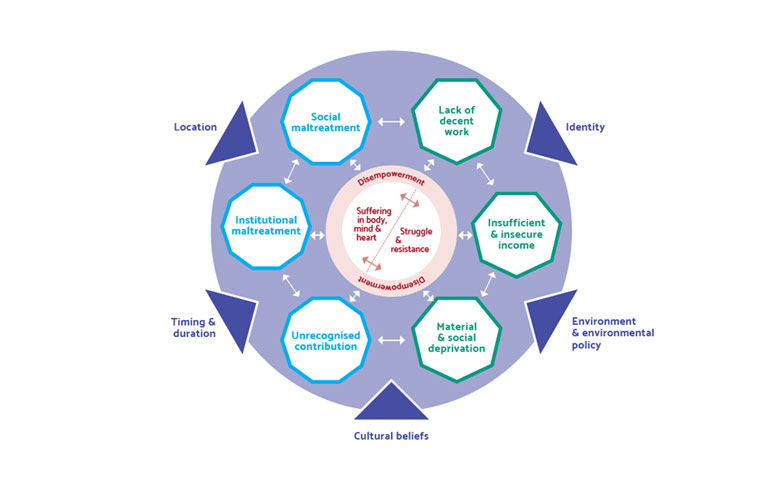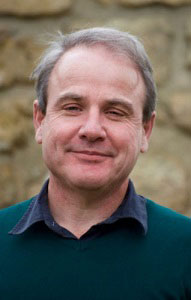Analysing and Rethinking Standards

Above: Diagram from ATD Fourth World and Oxford University Dimensions of Poverty research.
By Bruno Dabout, Director General, ATD Fourth World International
Beyond “listening”

Within ATD Fourth World, people with an experience of poverty often speak out. Sometimes we manage to convince local or international institutions working on poverty issues to listen to what they have to say. Even though they listen, the profound changes necessary to eradicate poverty do not take place.
As a movement, we are proud and happy to have introduced two key elements into the 2030 Sustainable Development Goals adopted by the United Nations’ General Assembly. These transformative goals are “leave no one behind” and, above all, “reach the furthest behind first”.
A radical approach: Reject “creaming”
But how do we reach these goals? We find that policy makers and programs often resort to approaching people as problems (homeless, school drop out, drug addict) and then setting quantitative targets related to these categories. However, people don’t fit neatly in categories. Unfortunately, this perspective prevents programs from addressing the whole person. In addition, some people do not even show up in figures. Proving you fit into a category requires documentation and paperwork that many can not provide. You can’t “increase graduation rates” if you don’t know how many students have dropped out of school. Only looking at certain categories or numbers means that programs reach only the more capable people in poverty. These labeling and quantitative approaches, sometimes called “creaming”, will never achieve Sustainable Development Goal 1 “Eradicate poverty in all its forms”.
To truly overcome poverty we must reject “creaming”. Instead policies must focus on people who often remain invisible. And programs must stop working only with people sure to succeed, making the program look “effective.”
This approach is a radical departure from the usual way of thinking about policies and programs. It calls into question the standards we use to judge the success of policies and programs. It also requires us to reconsider these goals in collaboration with people who struggle against poverty every day.
Broader definition of poverty needed
Recently, ATD and the University of Oxford conducted a participatory research project on The Hidden Dimensions of Poverty. People with experience of poverty described a range of characteristics of poverty. During the research they talked of suffering and struggle, of course, but also resistance, institutional abuse, and disempowerment.
Frequently policies define poverty in monetary terms and this definition is widely accepted. However, in the ATD/Oxford research, people with experience of poverty and academics both challenged this definition and offered a broader one. We believe that projects should adopt this much broader definition of what poverty actually is.
This more complete understanding of poverty should be used in specific projects and more widely in all approaches to poverty. Refusing to target only the more capable among people in poverty is both radical and ambitious. But without such a profound shift in thinking, we will never address the structural causes of poverty.

